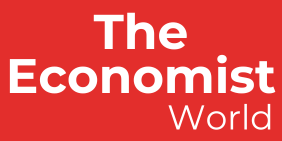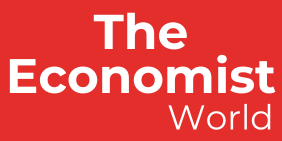President Donald Trump holds a signed executive order after delivering remarks on reciprocal tariffs during an event in the Rose Garden on April 2, 2025.
Saul Loeb | Afp | Getty Images
President Trump’s new tariff regime, formally triggered by his invocation of the International Emergency Economic Powers Act, is no longer theoretical. On Saturday, a baseline 10% tariff was first applied to nearly all imports. On April 9, that will escalate to higher, individualized rates on countries with the largest trade deficits with the United States. What’s being framed as a bold reassertion of U.S. economic sovereignty is a high-stakes test of the federal government’s implementation capacity — one that we are plainly unprepared to pass.
The administration’s expansive use of IEEPA — meant for more traditional types of national emergencies — now serves as the foundation for remaking the entire U.S. trade regime. The fact sheet accompanying the order is wide-ranging: a policy aimed at correcting global imbalances, restoring manufacturing, reshoring supply chains, confronting non-market economies, and ensuring the defense industrial base is no longer dependent on foreign adversaries.
It’s a real grab bag of the greatest hits from a long list of well-known Trump grievances. But one thing the fact sheet does not offer is a coherent implementation plan. The policy goals far surpass the capacity of the current federal government to effectively and timely implement the tariffs. To impose variable tariffs across all trading partners — with hard to follow and sundry carveouts, retaliatory triggers, national security exemptions, and modification authorities — requires more than presidential intent. It demands a well-resourced bureaucracy, a clearly articulated process, and interagency coordination at a scale not seen in recent memory. And none of that is currently in place.
Agencies such as USTR, Commerce, and Treasury will be central players in standing up this structure. But it is Customs and Border Protection (CBP) — already stretched thin — that will be responsible for frontline enforcement. CBP is underfunded, understaffed, and ill-equipped to absorb this kind of policy shock. They will be asked to manage a flood of product classification disputes, origin verification challenges, and tariff compliance actions with no significant augmentation of manpower, increased systems and technological capacity, or time to prepare for execution.
CBP’s own budget documents and independent oversight reports make this clear. The agency’s FY2024 budget prioritized border security and fentanyl interdiction, leaving little for commercial enforcement at our ports. A 2023 GAO report highlighted long-standing staffing shortages at ports of entry, delays in processing, and inconsistent enforcement of trade rules. In effect, the agency tasked with executing the centerpiece of the administration’s economic strategy is being asked to do much more, much faster, with far less than will be required.
The bureaucratic bottleneck will hit importers first, with the return of what was seen during the supply chain snarls of Covid, scores of container ships floating just off the U.S. coast as they await the clearing of backlogs at the ports. But importers won’t be the only ones to suffer. U.S. businesses, retailers, manufacturers, and supply chain operators that rely on predictable flows of intermediate goods could face sudden delays, confusion, paperwork surges, and inventory gaps. That uncertainty will ultimately impact prices that consumers pay at the register.
In short order, global exporters may recognize that the U.S. enforcement architecture is ill-prepared and many may be tempted to game the system or find other tactical workarounds by transshipping through countries with lower “reciprocal” rates wherever possible — causing further delays and losses in projected revenue. That is important. The administration claims the tariffs will raise hundreds of billions of dollars and help offset tax cuts it plans to pass, but if CBP cannot consistently implement the new regime, the revenue projections will miss the mark. Worse, they could be offset by administrative costs, economic distortions, and retaliatory tariffs that hurt U.S. exporters.
Even seemingly simple questions — like whether a vehicle assembled in Mexico with Chinese parts qualifies for a blanket or component-based tariff — become minefields in the absence of clearly defined rules. And that’s before retaliation starts or exemptions begin to flow in.
Some inside the administration do recognize the problem, but are reluctant to speak candidly about the challenge. Ambassador Jamieson Greer at USTR appears to be one of the few officials quietly working to bring order to this increasingly chaotic pace and structure. His background and experience from Trump’s first term gives him a modicum of credibility, and his current lowkey efforts to reintroduce process discipline and clarity into the frenetic tariff policy whiplash deserves recognition. But Greer is attempting to systematize a policy environment that is being by driven by fiat and decree, the whims of the man at the top. Greer’s work may be thoughtful, but the policy process of this administration, its decision making and implementation architecture is not built to function the way that it has in the past.
What’s more troubling is the lack of a formal rulemaking process. No discernable public comment period was offered. It is true that IEEPA does not require one, but sound policy, particularly policy with this level of impact, could have used one. There is no visible administrative legal framework beyond citing the provisions of IEEPA that “allow” a president to take “decisive” action, no apparent mechanism for coordinating across the agencies tasked with implementing the details. What we are left with is a policy reliant on signaling over processes and structure, Truth Social post that serve as instructions to those responsible for implementation, and the brute force application of raw power and perceived leverage over realistic and achievable goals and outcomes. Uncertainty itself as the tool may serve the short-term negotiation tactical interests of President Trump, but it’s a dangerous foundation for long-term trade policy and its effective implementation.
While the executive branch expands its authority, Congress continues to recede into the background. There are, to be fair, rare moments of resistance. Last week, the Senate — with the help of four Republicans (Mitch McConnell, Rand Paul, Susan Collins, and Lisa Murkowski) — voted to terminate Trump’s previous national emergency declaration on fentanyl trafficking, the legal pretext for imposing a 25% tariff on Canadian imports. That narrow vote was a rare attempt at congressional oversight, an effort to claw back authority that many now realize has been misused or stretched way too far.
On Thursday, U.S. Senators Maria Cantwell (D-WA) and Chuck Grassley (R-IA), senior members of the Senate Finance Committee, introduced legislation to reaffirm the key role of Congress in U.S. trade policy.

But that was the Senate. In the House of Representatives, no such courage has emerged among the Republican leadership. A few congressional members have introduced legislation to rein in the president’s power to use a 1930 trade law as the basis for unilateral trade authority. But Speaker Mike Johnson and others in the Republican Party appear unwilling to challenge the executive’s expanding use of trade authorities granted to it by Congress, even as the scope and complexity of these tariffs risk spiraling far beyond the federal government’s ability to execute on them.
The consequences of that passivity are real, in the form of the coming delays at ports, lawsuits by importers, arbitrary or uneven enforcement, and disrupted supply chains — economic dislocation not just for foreign producers, but for the very American manufacturers and workers the policy claims to support.
The first real tariffs stress test is now underway. If implementation falters, the economic impact may be less about tariffs themselves and more about the confusion, instability, and the credibility losses that follow. Policy by proclamation is no substitute for execution, and execution, especially at this scale, requires more than belief — it requires institutions that work, systems that are ready, and oversight that functions. Right now, we have neither the capacity nor the clarity to pull this off. Congress has the tools to fix that. But time is running out.
—By Dewardric McNeal, Managing Director and Senior Policy Analyst at Longview Global, and a CNBC contributer


